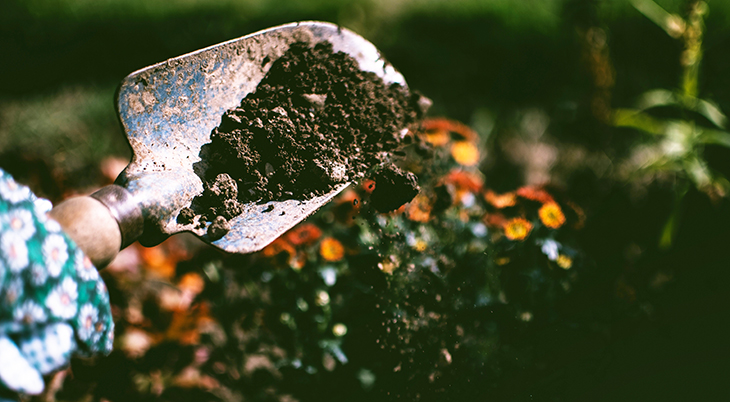Top 3 End of Summer Gardening Tips
The benefits of having a home garden are countless. It’s a wonderful way to stay physically active, it can reduce stress levels and offer a relaxing form of self-care, and it can improve the curb appeal of your home. If you’re retired, a garden is a perfect hobby you can do from home while enjoying your yard.
 (Gardening Photo: Lisa @ Pexels.com)
(Gardening Photo: Lisa @ Pexels.com)
Then again, maybe you just love having fresh tomatoes whenever you want!
Whatever the case, gardens are great additions to every home, especially when they’re flourishing throughout the summer. But, now that the season is winding down, home gardeners often find themselves wondering what to do.
Just because the end of summer is near doesn’t mean your green thumb needs to take a break. You might be able to grow a few end of season plants and veggies before the cold weather hits. After that, it’s important to know how to prepare your garden for winter and make sure it will be ready to go when warm weather comes around again.
If you’re not sure how to do that, we’ve got some helpful tips you can use.
1. Get In Some Last-Minute Planting
Whether you plant veggies or flowers, you are probably used to starting in the spring, But, some plants actually do better when they’re sown at the end of summer. Some of the best end-of-summer vegetables to plant include:
- Kale
- Collards
- Brussels sprouts
- Peas
- Radishes
- Spinach
- Turnips
Some of these veggies, like kale, can survive temperatures as low as 20 degrees F (-7 C), so you can enjoy the nutritional benefits of fresh greens well into the fall and early winter.
Keep in mind that what you plant depends on where you live. For example, if you’re in southern British Columbia, you may be able to plant vegetables in late July and August to enjoy during a mild winter, including carrots and greens. If you’re in some parts of the northern U.S., you may be able to plant things like garlic, onions, shallots, and carrots to eventually enjoy with an early spring harvest.
Of course, spring-blooming bulbs like tulips are best planted in the late summer or early autumn (September-October) before the ground freezes.
2. Clean Up Your Garden The Right Way
If you have a flower garden, or you’re done harvesting your crops for the year, cleaning up the area is important. It will keep your garden healthy throughout the winter and make it easier for you to start planting right away when warm weather returns.
Before you start cleaning things up, be sure to snap a few photos of your hard work over the season! Whether you want to remember the beauty of your flowers or the bounty of your vegetable harvest, having some photos can help get you through the colder months. Plus, being outside in natural lighting is one of the best ways to capture some gorgeous pictures from your phone!
Cleaning up your garden doesn’t have to be overwhelming when you follow a few simple steps:
- Clean up any plants that are dying or rotting.
- Remove any weeds that have popped up throughout the season.
- Prepare your soil with compost and other nutrients.
- Cover the bed.
If you’re going to be digging in the soil, make sure you protect yourself. Digging down deep is a great way to disperse nutrients throughout your garden, but make sure your soil doesn’t contain any harmful substances like vermiculite. This is a naturally occurring mineral that used to be mined from the same ore deposits as asbestos. In some regions it was sold as a common gardening component until the 1980s, and may still be found in the soil of some existing gardens today. When exposed, vermiculite it can cause some of the same harmful effects as asbestos, including lung cancer.
Once you have your garden cleaned up, the final step is properly disposing of your yard waste. Some things can be composted and eventually given back to the garden. You can also turn some items into mulch or even feed for local wildlife.
3. Prepare Your Garden For Next Year
If you’ve really got a green thumb and you’re already excited for next spring, you’ll want to take extra steps to make sure your garden is ready. Cleaning up and preparing the soil now are great places to start.
But, you can get a head start on spring growth by doing things like bringing exposed bulbs inside when temperatures get too low, and taking root cuttings from healthy plants to “re-plant” them in the spring. You can keep them healthy all winter by planting them in pots with nutrient-dense soil and creating a greenhouse environment inside your home.
Winter is also a good time to prepare yourself for the next gardening season. Take the time to clean your tools and sharpen some of them if necessary. it’s also a perfect time to research new eco-friendly fertilization methods and even new techniques you might want to try next year. If you’re a true gardening enthusiast, that doesn’t simply go away when it’s colder. So, once your garden is clean and safe, you can keep yourself occupied to make it even more successful next year.
*This article is for general informational purposes only. 50+ World does endorse any product or service providers, nor does it receive remuneration from them. Obtain expert advice from qualified practitioners about your unique situation.*
